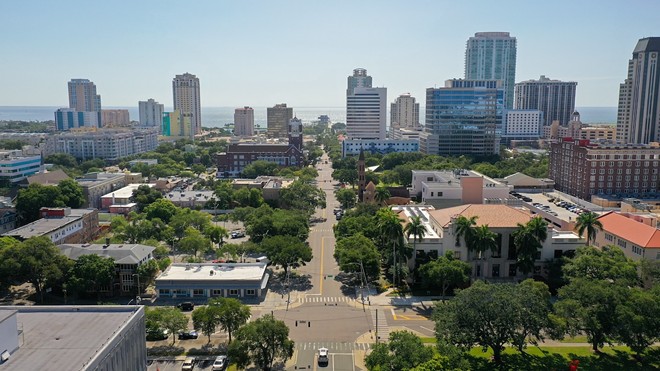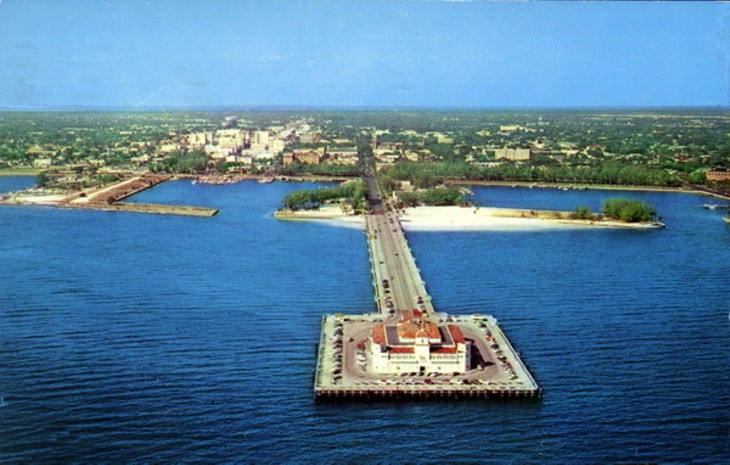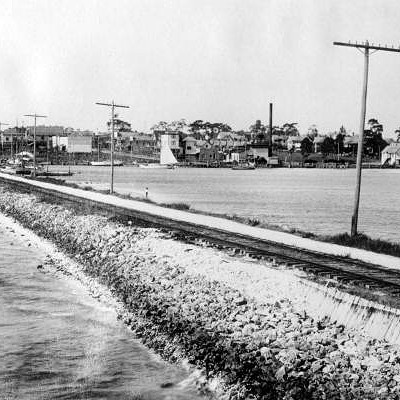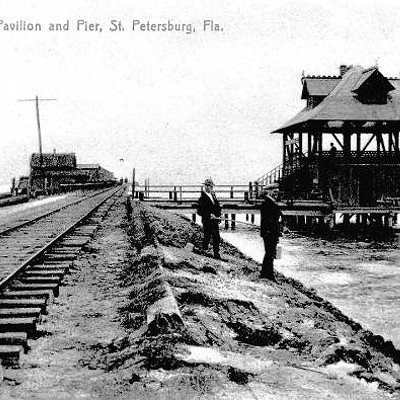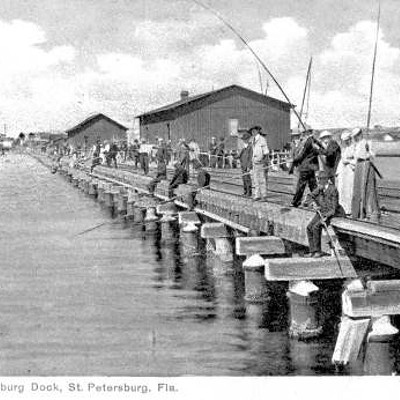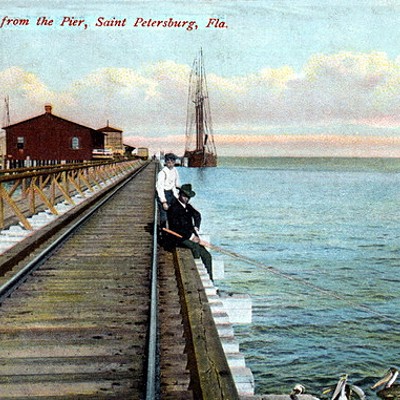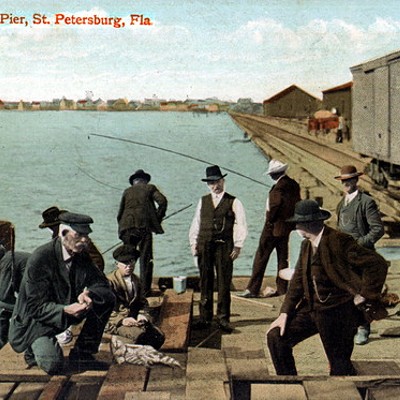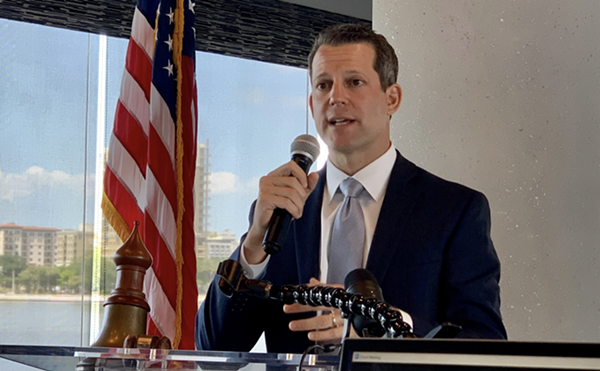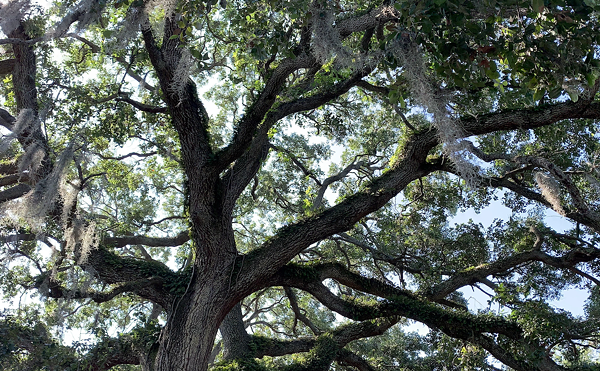The origin story for each town was wildly different.
In 1824, Tampa started as a military post, Ft. Brooke. The town was small and housed less than 800 people until 1881 when Henry Plant, brought his steamship company and railroad to town. His trains were a catalyst for Don Vicente Martinez Ybor to build his cigar factory here and establish Ybor City, immediately adjacent to Tampa. Although the grounds of the Plant's Tampa Bay Hotel (now the University of Tampa )were lavishly landscaped, the rest of Tampa was industrial with primarily working class housing—think hardscape and utilitarian.
When St. Petersburg was incorporated in 1903, the population was 300 and it was established as a winter escape. One of the city's founders, Peter Demens, hailed from St. Petersburg, Russia, and named the area in honor of his homeland. The fishing industry was part of the local economy, but in 1908, William Straub, the editor of the St. Petersburg Times for 38 years, campaigned to move the docks, warehouses and boat repair south of the town center and create a waterfront park—think green and a water view.
After 60 years, Tampa reworked its waterfront, but it's been playing catch up for decades.
Both Tampa and St. Pete have dreadful histories of racism in housing, public education and amenities. However, 20 years ago, a gifted actor turned cultural empresario, the recently-retired Bob Devin Jones, created Studio@620, where "The Answer is Always Yes." This extraordinary place hosts theatrical productions, dance performances, literary readings, film screenings, art exhibitions, poetry, comedy and concerts.
The breadth of the programming is staggering and this is all accomplished with three staff members and lots of volunteers. Studio@620 has always welcomed performers and audiences from all parts of the community, Black, white, young, old, rich and not. Ticket prices are reasonable and the non-intimidating vibe encourages participation from a wide variety of artists. A peek at the schedule, filled with the Radio Theatre Project, which was inaugurated there, to a Shopizaar, is exciting in its originality.
Studio@620 opens its doors to warmly welcome the entire community. Jones told Creative Loafing Tampa Bay that "when you go home to see your family, you don't have to make a reservation...it's there for you. In the same way, just knowing that place exists is comforting." His venue, now in the hands of theater veteran Erica Sutherlin, is a gift to the city.
In the Grand Central District of town, Tombolo Books offers not only a broad and deep variety of books, but a lively series of activities ranging from author's talks to children's story time to in store book clubs.
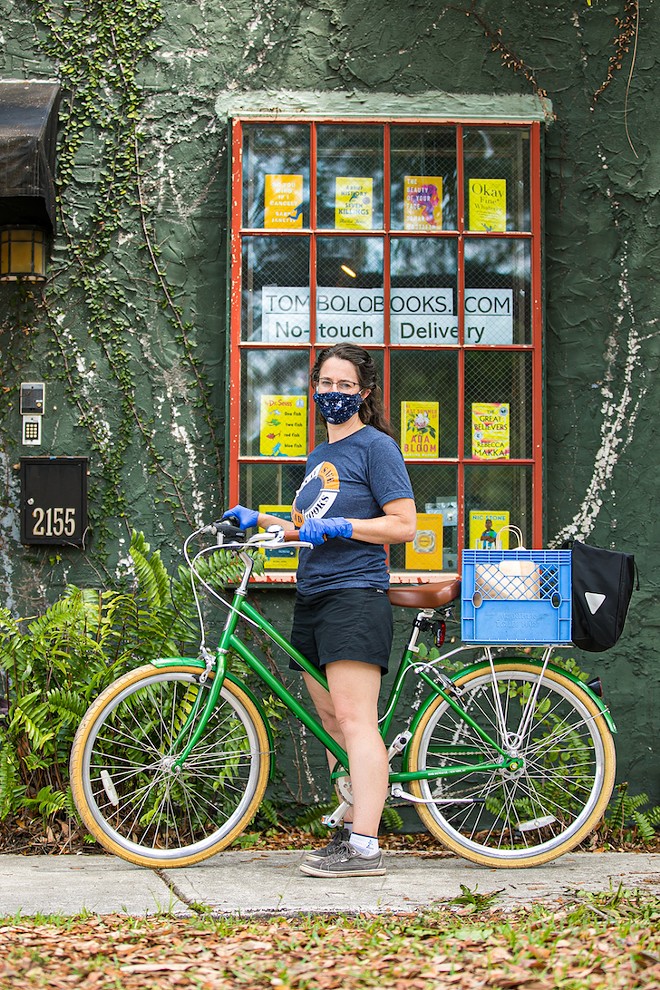
She spent 16 years at the legendary Asheville, N.C. bookstore, Malaprops, directing events and learning the book biz. When her wife moved to Florida for business, she fell in love with St. Pete but recognized the critical lack of an event-driven independent bookstore.
She opened this store in December 0f 2019, 90 days before Covid, and survived the shutdown by delivering books by bicycle within a three-mile radius. Finding a space next to Black Crow Coffee, an existing coffee bar, was a win, allowing customers access to snacks without having to organize that business. Walentine has been gratified by the community's enthusiastic response. "My life has busted wide open with this store,” she told CL.
At Tombolo, Walentine cultivates a community’s love for reading and need for books, while serving schools, businesses, and nonprofits not just from St. Pete, but across the U.S.
“Just this past weekend we had customers from Boston, Maine, Chicago, Minnesota, St. Louis, Philadelphia, Tacoma, Baltimore, and Pennsylvania! I've never once regretted the leap of faith it took to open Tombolo Books,” she added.
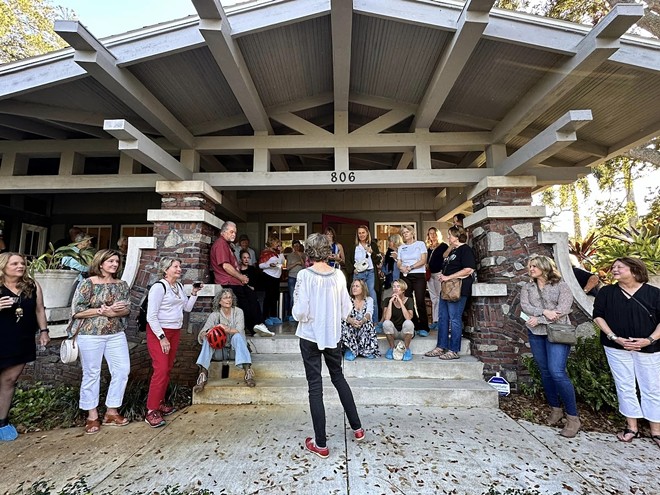
The group organized in 1977 and now claims a paid executive director in addition to an army of volunteers who lead the walking tours, help with the outdoor movie series and organize the many celebrations of local treasures which have been protected. Volunteers provide the energy by attending the myriad public meetings and discussions on the future of homes, buildings and neighborhoods.
Since historic structures need resources and protective laws to sustain them, Preserve the 'Burg is also busy educating the public about what is necessary for stewardship. Funds, both public and private need to be raised and owners need to understand the value of their historic properties.
The organization is part of the civic discourse and helps laypeople navigate zoning and tax breaks for preservation, helping bridge the gap between development interests, elected officials, city administration and neighborhood groups.
Manny Leto, the director, understands the complex dynamics of place-conscious development. "
"I think people intrinsically know what makes cities fun and vibrant: a mix of old and new architecture, unique places—think about your favorite brewery or that quirky hotel you stayed at once—but they might not know the term adaptive reuse,’” Manny Leto, director for Preserve The ‘Burg, told CL. “That's where organizations like ours come in. We get the wonky stuff and can help educate people about how historic architecture can enhance a city's quality of life and identity."
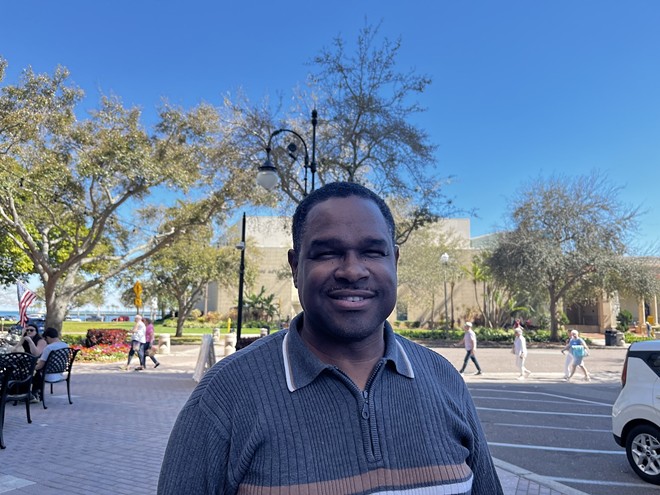
James Jackson, the City of St. Pete's Senior Project Coordinator is an ultimate insider when it comes to the history and inner workings of the Sunshine City. He grew up in St. Pete. His grandparents, whom he visited often, lived in Tampa and he worked as the City of Tampa's City Architect, the first African American in this role, under three mayors, so his perspective is keen.
Jackson saw that Tampa's economic thrust was toward business, encouraging banks to build high rises in the CBD, while St Pete focussed on the residential development downtown. Growing up, he observed that Tyrone Mall killed downtown shopping and that most retail west of 9th Avenue was dead. Since the low-rise building profile wasn't challenged, these areas remained intact and are now renovated and dynamic.
Pinellas is the most densely populated county in Florida, with close to 3,500 people per square mile. According to the county itself, only Broward, with 1,470 people per square mile, gets close.
Jackson pointed out the obvious: growth for Pinellas could only be vertical and more dense. Clear zoning rules, crafted by the local government, have directed growth which mostly satisfies both the public and developers.
"The fabric has never changed and zoning enhances the character of these corridors,” he added.
By carefully outlining public expectations for parking, height, landscaping and setbacks, everyone knows what they can expect to build. In residential neighborhoods, density can be carefully created by ADUs (Additional Dwelling Units) with off-street parking mandated for the extra living space.
Jackson credits Randy Wedding, the St. Pete Mayor who was professionally an architect, for bringing Interstate exits to downtown and encouraging businesses such as Raymond James to locate their suburban campuses in the Gateway area, rather than downtown.
Wedding was an architect by trade and served the city between 1973-1975. At the same time, Tampa had Mayor Dick Greco, an actual developer, who once staged a “bloodless” bullfight in Ybor City. In his 2005 book “Land of Sunshine, State of Dreams,” historian Gary Mormino wrote how the exhibition went off the rails when a state trooper had to kill a stampeding bull with a high-powered rifle.
Quite the contrast.
So, St. Pete is rocking in a lot of ways, and Tampa would be wise to take note sometimes. Imitation is the sincerest form of flattery.
Subscribe to Creative Loafing newsletters.
Follow us: Apple News | Google News | NewsBreak | Reddit | Instagram | Facebook | Twitter | Or sign up for our RSS Feed

